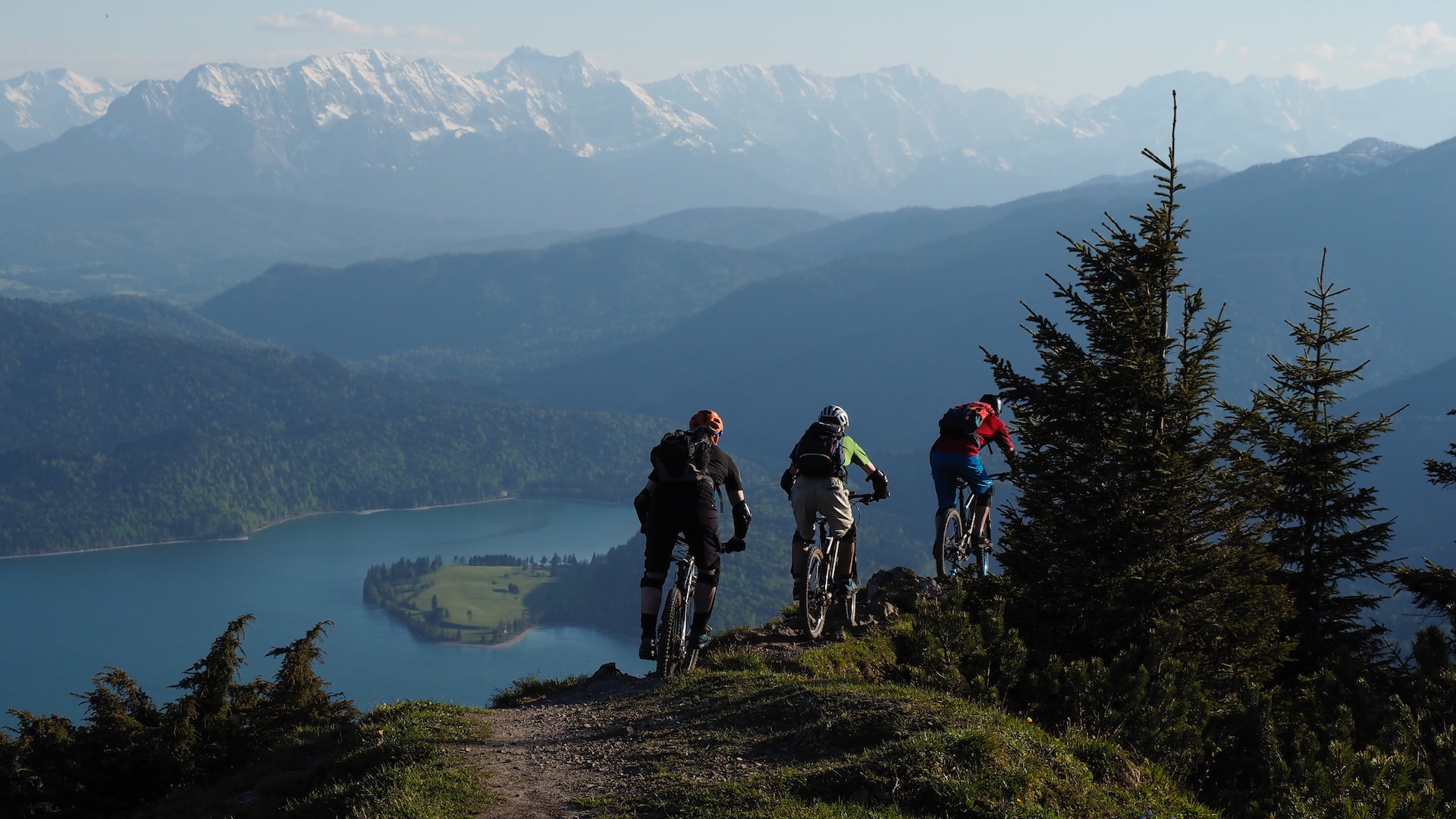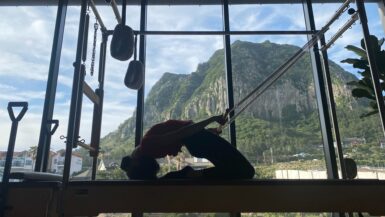Mountain biking is an activity that is rapidly growing in popularity among all age groups, including seniors. Not only is it an enjoyable and engaging way to spend time outdoors, but mountain biking also offers a wide variety of health benefits that can be especially beneficial to older adults. From improved cardiovascular health to increased muscle strength, mountain biking is an exciting physical activity that seniors can enjoy in a safe and secure environment. In this article, we’ll explore the advantages that mountain biking can provide for senior riders and how it can be a great way to stay fit, active, and healthy.
Physical and Mental Benefits
Mountain biking can help seniors improve their overall brain health. Studies show that engaging in physical activity helps seniors reduce their risk of developing memory loss, dementia, and Alzheimer’s disease. In addition, regular mountain biking can help promote better coordination, balance, and spatial awareness. This is especially beneficial for seniors looking to stay active and avoid age-related diseases.
Physical Benefits
Mountain biking has a range of physical benefits for seniors. It can improve cardiovascular health, muscle strength and endurance, balance, and weight loss. Studies also suggest mountain biking can help reduce chronic joint pain, improving an individual’s overall physical health.
Mental Benefits
Mountain biking can also provide seniors with mental benefits. It can help reduce stress, decrease depression and anxiety, and improve overall mood. Studies suggest that regular physical activity can also help increase endorphins, a hormone that helps improve feelings of happiness and wellness. In addition, mountain biking can provide seniors with a sense of purpose and accomplishment, helping to boost self-esteem.
Social Benefits
Mountain biking can also help seniors stay socially active. Seniors can enjoy the company of other riders while biking, which can help to prevent feelings of isolation and loneliness. Additionally, mountain biking can allow seniors to explore new places and meet new people. This can help to boost confidence and lead to meaningful relationships.
Safety Considerations
Mountain biking has many physical and mental benefits for seniors. It can increase their overall strength and flexibility, as well as help to improve their balance and coordination. However, seniors must follow specific safety considerations while mountain biking to maximize the benefits and prevent potential injuries.
Pick the Right Bike
Seniors should choose a bike that is both lightweight and comfortable, with a lower standover height so they can easily mount and dismount the bike. The cycle should also have suitable brakes, gears, tires, and a comfortable seat.
Wear Appropriate Gear
When mountain biking, seniors should always wear safety gear such as helmets, knee pads, and elbow pads. They should also wear bright and visible clothing to help increase their visibility to other cyclists and motorists.
Start Off Slow
Seniors should begin with easy trails and familiar terrain and then gradually increase the difficulty of the courses as their skills improve. This will help to maximize their safety and prevent potential injuries.
Stay Alert
Seniors should stay aware of their surroundings and be alert for other cyclists, pedestrians, and vehicles while mountain biking. They should be mindful of the obstacles they may encounter on the trail, such as rocks, roots, and ruts, and avoid riding in slippery or wet conditions.
Follow Local Rules and Regulations
Seniors must understand and follow the area’s local rules and regulations for mountain biking. This includes using suitable trails and staying on the designated paths. They should also obey traffic signs and signals where applicable and avoid reckless or dangerous riding.
By following these safety considerations, seniors can maximize the benefits of mountain biking without risking their safety.
Finding the Right Bike
Mountain biking is a great way for seniors to stay fit, enjoy nature, and challenge themselves. But before beginning a mountain biking adventure, it is important to choose the right bike. Here are some tips to help seniors make the right choice:
Choosing a Bike Type
The type of bike seniors will depend on their individual needs and preferences. For example, some seniors may prefer a harder-to-handle full-suspension mountain bike, while others may opt for a lighter and more maneuverable hardtail mountain bike.
Bike Sizing and Fit
When selecting a bike, seniors need to ensure it fits properly. On average, most bike frames will fit riders between 4ft 10 and 7ft 2in height. When a bike is sized correctly, riders should be able to sit on the seat, firmly plant both feet on the ground and quickly reach the handlebars.
Trail Types
Seniors should also consider the types of trails they plan to ride. Cross-country biking is the most popular style of mountain biking, with average speeds of 15 to 20 miles per hour. Seniors should look for trails with gentle slopes and no significant obstacles. For seniors who plan to do more adventurous biking, ensuring the bike is up to the challenge, with good suspension and an appropriate frame is crucial.
Help from a Professional
If possible, seniors should visit a local bike shop and consult with a knowledgeable bike specialist. The specialist can help seniors choose a bike that is the right size and fit, as well as one that is suited for the type of biking they plan to do.
For seniors hoping to get out and enjoy the great outdoors, mountain biking is an excellent way to get fit and have fun. With the right bike and suitable trails, seniors can enjoy the adventure and challenge of mountain biking.
Exercise Routes and Locations
For seniors looking to stay fit and have an exciting outdoor adventure, mountain biking is an ideal activity. Cycling in the mountains can be an enjoyable and rewarding experience with the right safety gear and exercise routes. Here, we explore the various exercise routes and locations suitable for seniors mountain biking.
Inland Mountain Trails
Inland mountain trails may feature fewer dramatic vistas than coastal routes, but they can often provide a rewarding mountain biking experience. Rocky pathways, gradual hills, and deep forested sections can all be found in inland trails and chances to stop and explore historical sites, monuments, and picturesque lakes. Additionally, these trails are often less crowded than coastal paths, allowing for a more serene biking experience.
Safeguards for Senior Cyclists
When selecting a mountain bike trail, seniors should prioritize their safety. While plenty of scenic beauty can be found on the mountain paths, staying aware of the potential obstacles and dangers is crucial. This includes looking for narrow pathways, rock gardens, mud pits, and other mountain bikers.
Protective Gear for Mountain Biking
In addition to the right trail, seniors must also ensure they wear the correct protective gear for bike treks. This includes a cycling helmet, elbow and knee pads, and appropriate shoes and clothing. As mountain bike trails can often be unpredictable in terrain and obstacles, seniors should strive to follow the proper safety precautions to avoid accidents and injuries.
Selecting the Best Trails for Seniors
For mountain biking seniors, selecting trails suitable for their ability and experience level is vital. Easy trails should feature gradual pathways without intense hills or technical sections. The paths can be more challenging for the more experienced senior bikers, but safety should remain a priority. Additionally, if seeking a scenic experience, coastal trails are often the best bet.
Tips for Safe Riding
Mountain biking is becoming a popular exercise option for seniors due to its low-impact yet exhilarating nature. The sport offers a variety of benefits to those over the age of 50, such as improved cardiovascular health, decreased stress levels, and increased strength and endurance. Plus, mountain biking is often a more affordable option when compared to other forms of physical activity.
Wide Range of Trails to Choose From
Mountain biking also provides seniors with a wide range of trails to choose from. Depending on the senior ability and skill level, they can ride on easy trails or opt for more challenging terrain. This allows seniors to enjoy the sport while taking on a group of difficulty they feel comfortable with.
Benefits of Mountain Biking for Seniors
Mountain biking can provide numerous health benefits to seniors. Cardiovascular exercise provides seniors with an aerobic workout that can help to improve their overall cardiovascular health. Additionally, mountain biking can help reduce body fat, improve muscle strength, and enhance physical performance. In addition to physical benefits, mountain biking can also provide mental and emotional benefits. Being in nature and away from busy streets can help to reduce stress levels and give seniors a sense of joy and freedom.
Tips for Safe Riding
When mountain biking, it’s crucial for seniors to take certain safety precautions to ensure a safe and enjoyable ride. First and foremost, it’s essential to wear a helmet. It’s also important to dress appropriately for the weather and to wear protective gear such as long pants, closed-toe shoes, and gloves. Additionally, seniors should pay attention to the rules of the trail and should avoid riding in areas with wet or icy conditions. It’s also important to stay alert and aware of your surroundings while riding. These tips can help to ensure a safe and enjoyable mountain biking experience for seniors.
Reaping the Rewards: Benefits of Mountain Biking for Seniors
Mountain biking is a good activity for seniors. It is a full-body workout with several health benefits and can also help seniors increase their confidence, reduce stress, and stay connected with friends. It is an accessible activity for all fitness levels, from beginner to expert, allowing seniors to challenge themselves safely while taking in nature’s beauty. Whether they go solo or join a cycling group, seniors can reap the rewards of mountain biking by hitting the trails and enjoying the ride.






Leave a reply